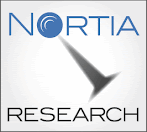Both Companies are network neutral, which means that they offer a wide range of competing bandwidth providers in their centers, that may be seen as secure bunkers where customers keep their servers to store Internet content, data, and interconnect to each other or to the final users, through Telecoms, ISPs.
Going back in time, it's interesting to note that Equinix was funded by Al Avery and Jay Adelson, (now the CEO of Digg.com), who had previously developed the concept that became the first commercial interconnection point of the Internet, the Palo Alto Internet Exchange, or PAIX®.
PAIX, that was later expanded to other US cities, was acquired in 2003 by Switch and Data, and still represents the foundation of the interconnection side of this Company's activity.
While the two Companies can be compared, as they share a similar model, and almost similar roots, as noted, it's useful to underline a few differences in their business approach:
Equinix has become the leader in the colocation sector, with a worldwide presence in all key markets, and revenues in excess of $ 700 Million in 2008 ($ 443 Million in the US), while Switch and Data only operates centers in North America only and has established a partnership in Europe with Interxion (a former Equinix partner) for customer referral, to try to respond to the needs of multinational customers (2008 revenues: $171,5 Million);
Equinix data centers are usually larger (an average of 82,500 sqft.), and the Company concentrates its efforts in a few, selected, major markets (only 6 in the USA), while Switch and Data centers are present in 23 North American markets (including Toronto, Canada) and are usually smaller in size (on average less than 31,000 sqft., ranging from 8,000 to 254.300 sqft.);
locally, both Companies enjoy leadership in different markets – Switch and Data Palo Alto PAIX is the best interconnected center in the West Coast, while Equinix is the leader in the East Coast with its Ashburn (Washington DC metro) center – but usually both firms offer access to the main bandwidth providers in each of the markets where they do have a presence, as their centers are a “must be” location for Telecoms, ISPs, etc.;
Equinix listed on NASDAQ in 2000, and survived through the bubble burst as a public Company, while Switch and Data had its IPO only in February, 2007, taking advantage from the bubble burst through its PAIX acquisition from the AboveNet/Metromedia Fiber Network bankruptcy ;
both Companies enjoyed a nice growth rate in the last few years (+25% for Switch and Data and +38% for Equinix, organically, in 2008 ) and their outlook for 2009 is predicting a similar increase, +20% for Switch and Data and slightly in excess of 20% for Equinix.
We will limit our metrics mostly to data for the last 2 years, given Switch and Data recent history as a listed Company, but also because these numbers represent, for both Companies, a maturity level.
To run our comparisons, we will make use of spreadsheets created by Gridstone Research. This Company assembles, analyzes, and structures unstructured company information into operational data, and graphics. What is interesting about their method, is that they do not limit their research to Company filings, but also include conference call transcripts, from Seeking Alpha, and other sources of information, and this does also allow to dig into additional metrics, like in this case churn or cabinets billing or same centers revenues, that usually would require a specific, often time consuming research.
Let's start from some basic analysis - revenue, recurring revenue and gross profit for both Companies (you may click on the charts to enlarge):


Both Companies have been growing steadily, recently, and recurring revenues (a very predictable number, as it is linked to contracts with an average life of about two years) do represent almost 95% of the total turn over. Equinix shows a spike in the 4Q of 2007 due to the first full quarter integrating the European assets derived from the acquisition of IX Europe, that increased revenues but also did impact margins negatively.
Here is a view of total revenues and EBITDA for both Companies (US numbers only for Equinix, for an apple to apple comparison): we may notice that EBITDA is generally growing, in percentage, at a faster pace than revenues, and has reached a very healthy 49.5% of revenues for Equinix in the last quarter (US only, 44.1% in total), while Switch and Data is at 34.6%.


Equinix has also been reporting, in the past, revenues for “same IBX” centers, to give some insight into organic growth excluding the new openings – here is a quick look:

Finally, some sector related metrics like cabinets billing (growing for both Companies) and churn: as to this metric, it is interesting to note that both Companies are forecasting, in spite of the difficult economic climate, a very low churn at about 2% per quarter, and Switch and Data has achieved so far keeping this number well below that level:


Lastly, if we look at 4Q 2008 numbers, we realize that Equinix enjoys a very healthy revenue per employee ratio, having achieved $ 188,000 per employee in that specific quarter, or $ 752,000 on a yearly basis (USA numbers only, it is $171,000 per quarter as a Company, or $ 684,000 yearly), while Switch and Data is at $ 135,100 in the 4Q 2008 ($ 540,400 yearly) – as we noticed Equinix data centers are generally larger and the economy of scale achieved probably contributes to a stronger productivity number.





No comments:
Post a Comment